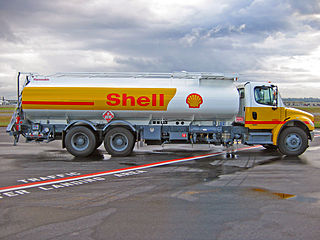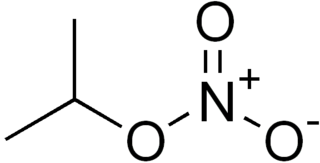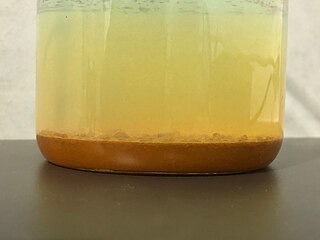 W
WAviation fuels are petroleum-based fuels, or petroleum and synthetic fuel blends, used to power aircraft. They have more stringent requirements than fuels used for ground use, such as heating and road transport, and contain additives to enhance or maintain properties important to fuel performance or handling. They are kerosene-based for gas turbine-powered aircraft. Piston-engined aircraft use gasoline and those with diesel engines may use jet fuel (kerosene). By 2012 all aircraft operated by the U.S. Air Force had been certified to use a 50-50 blend of kerosene and synthetic fuel derived from coal or natural gas as a way of stabilizing the cost of fuel.
 W
WAvgas is an aviation fuel used in aircraft with spark-ignited internal combustion engines. Avgas is distinguished from conventional gasoline (petrol) used in motor vehicles, which is termed mogas in an aviation context. Unlike motor gasoline, which has been formulated since the 1970s to allow the use of platinum-content catalytic converters for pollution reduction, the most commonly used grades of avgas still contain tetraethyllead (TEL), a toxic substance used to prevent engine knocking (detonation). There are ongoing experiments aimed at eventually reducing or eliminating the use of TEL in aviation gasoline.
 W
WAviation biofuel is a biofuel used for aircraft. It is considered by some to be the primary means by which the aviation industry can reduce its carbon footprint. After a multi-year technical review from aircraft makers, engine manufacturers and oil companies, biofuels were approved for commercial use in July 2011. Since then, some airlines have experimented with using biofuels on commercial flights. The focus of the industry has now turned to second generation sustainable biofuels that do not compete with food supplies nor are major consumers of prime agricultural land or fresh water. NASA has determined that 50% aviation biofuel mixture can cut air pollution caused by air traffic by 50–70%.
 W
WIsopropyl nitrate is a colorless liquid monopropellant. It is used as a diesel cetane improver. IPN is a low-sensitivity explosive, with a detonation velocity of approximately 5400 m/s.
 W
WBlau gas was an artificial illuminating gas similar to propane, named after its inventor, Hermann Blau of Augsburg, Germany. It was manufactured by decomposing mineral oils in retorts by heat and compressing the resulting naphtha until it liquefied. It was transported in liquid condition, and like LPG, when released it returns to gaseous state. Chemically, it is similar to coal gas.
 W
WFuel polishing is the technical cleaning process used to remove or filter microbial contamination from oil and hydrocarbon fuel in storage. It is essentially the removal of water, sediment and microbial contamination from such fuels as diesel, red diesel and biodiesel. This fuel contamination, also known as 'fuel bugs', or 'diesel bugs', or 'so-called algae' build up over time in stored fuels if they aren't tested and treated on a regular basis. Fuel Analysis should be undertaken before fuel polishing is commenced so that the exact contamination problem can be rectified with a targeted solution. A second fuel test should be performed after the fuel polishing has been completed to confirm the problem has been fixed.
 W
WJet fuel or aviation turbine fuel is a type of aviation fuel designed for use in aircraft powered by gas-turbine engines. It is colorless to straw-colored in appearance. The most commonly used fuels for commercial aviation are Jet A and Jet A-1, which are produced to a standardized international specification. The only other jet fuel commonly used in civilian turbine-engine powered aviation is Jet B, which is used for its enhanced cold-weather performance.
 W
WJet fuel or aviation turbine fuel is a type of aviation fuel designed for use in aircraft powered by gas-turbine engines. It is colorless to straw-colored in appearance. The most commonly used fuels for commercial aviation are Jet A and Jet A-1, which are produced to a standardized international specification. The only other jet fuel commonly used in civilian turbine-engine powered aviation is Jet B, which is used for its enhanced cold-weather performance.
 W
WJet fuel or aviation turbine fuel is a type of aviation fuel designed for use in aircraft powered by gas-turbine engines. It is colorless to straw-colored in appearance. The most commonly used fuels for commercial aviation are Jet A and Jet A-1, which are produced to a standardized international specification. The only other jet fuel commonly used in civilian turbine-engine powered aviation is Jet B, which is used for its enhanced cold-weather performance.
 W
WJet fuel or aviation turbine fuel is a type of aviation fuel designed for use in aircraft powered by gas-turbine engines. It is colorless to straw-colored in appearance. The most commonly used fuels for commercial aviation are Jet A and Jet A-1, which are produced to a standardized international specification. The only other jet fuel commonly used in civilian turbine-engine powered aviation is Jet B, which is used for its enhanced cold-weather performance.
 W
WJet fuel or aviation turbine fuel is a type of aviation fuel designed for use in aircraft powered by gas-turbine engines. It is colorless to straw-colored in appearance. The most commonly used fuels for commercial aviation are Jet A and Jet A-1, which are produced to a standardized international specification. The only other jet fuel commonly used in civilian turbine-engine powered aviation is Jet B, which is used for its enhanced cold-weather performance.
 W
WTurbine Fuel, Low Volatility, JP-7, commonly known as JP-7 is a specialized type of jet fuel developed for the United States Air Force (USAF) for use in its supersonic military aircraft; including the SR-71 Blackbird and the Boeing X-51 Waverider.
 W
WTH-dimer, also called tetrahydromethylcyclopentadiene dimer or RJ-4, is a liquid rocket propellant used in missiles and jet engines. For example, TH-dimer is used in the turbofan engine of the Tomahawk cruise missile. It is also a component of the jet fuel JP-9.